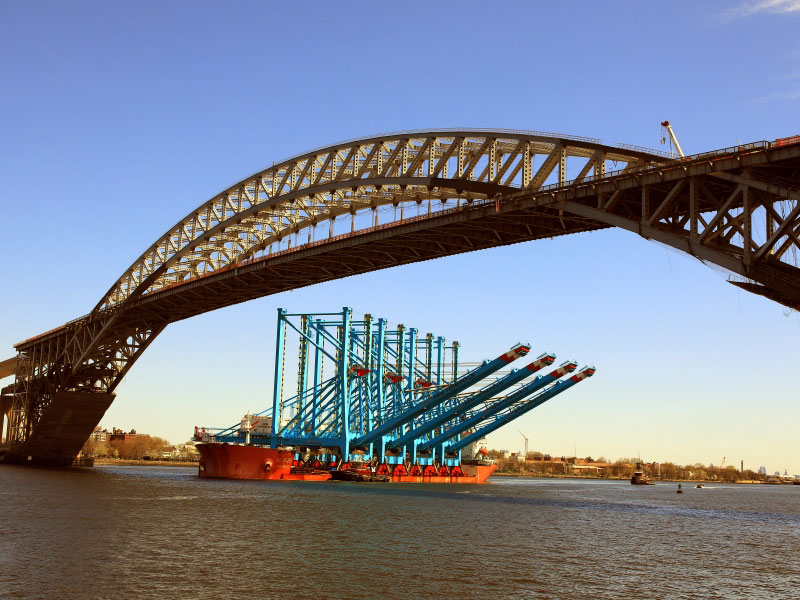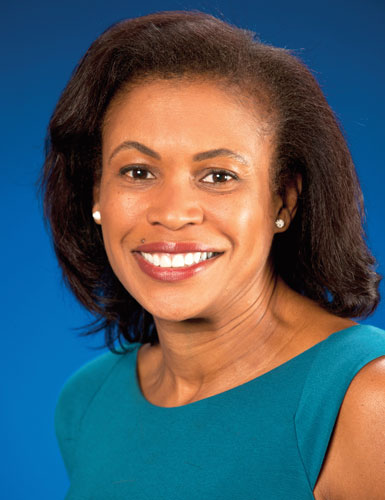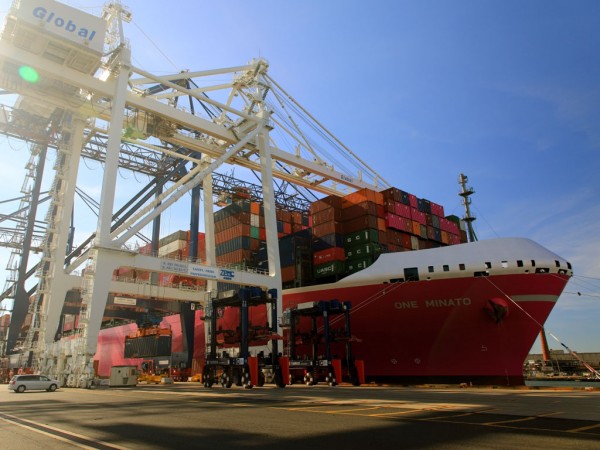As she leaves the helm of the Port of New York and New Jersey to embark upon a Harvard University fellowship, Molly Campbell can take heart in having meritoriously followed the classic motherly advice to leave a place better than one found it.
While the third-largest U.S. port complex and busiest containerport on North America’s Atlantic Coast was already on a steady course forward when Campbell became director of the Port of New York and New Jersey in July 2015, the advancement of multiple key initiatives is helping propel record activity, with a nearly completed master plan – launched by Campbell – poised to guide the next three decades of growth.

“I have a fabulous team that’s going to continue to make inroads,” Campbell continued. “One of the things that I feel particularly gratified about is the communications and how we outreach, both to our customers and the port community partners, and the collaboration that we’ve taken up.”

“If we continue to do the things that we do well, we will see growth, and we’ve seen it this year,” said Campbell, noting continuing record container volumes moving through the port, including a July in which 622,559 twenty-foot-equivalent units were handled, up 7.9 percent from July 2017. Rail volume is up about 14 percent on a year-over-year basis, with autos moved up almost 3 percent and cruise activity on the rise as well.
“Across all of our business lines, we’re seeing strong growth,” she added. “So, every month when the numbers come in, my concern isn’t what other ports per se are doing but how well are we doing relative to our numbers before. We actually are becoming our own competitor, because the record moves have been outstanding.
“That is a result, I think, of the larger ships being able to come, the fact that, even before the [Bayonne] Bridge was raised, we were able to deepen our channel [to 50 feet] and put some infrastructure in place that allows that growth to happen,” Campbell said. “We’re very happy with the performance that we’ve seen, and I think our customers are as well.”
Since raising of the Bayonne Bridge roadway over Kill Van Kull between Bayonne, New Jersey, and Staten Island, New York, achieved greater navigational clearance in mid-2017, the port has seen a significant increase in calls by megacontainerships with capacities of more than 10,000 TEUs.

“We’re also seeing that we’re the first port of call in many cases,” she went on to say, “and, in some cases, it’s a double move, where we’re not only the first port of call but also the last port of call. The significance of that is for intermodal volumes that we’re really pushing.”
At the same time, the port has been able to minimize congestion, Campbell said, commenting, “We have done a really good job in terms of timing. The appointment system at GCT Bayonne has been very helpful. What we are going to focus on going forward is what we need to do to continue to grow the port on the intermodal side in particular and also the master planning effort that we’re doing to make sure we have the foundation for the future.”
In addition to serving an immediate metropolitan area of more than 20 million residents, largest in the nation, the Port of New York and New Jersey boasts inland reach extending to Midwest cities such as Cleveland, Cincinnati, Columbus, Indianapolis, Chicago and Detroit.
Sam Ruda, the Port of New York and New Jersey’s deputy director, noting the port’s frequent first U.S. call status on both trans-Suez Canal and trans-Panama Canal services, interjected, “Being a first port of call certainly helps that value proposition for intermodal because, from a transit time perspective, it’s the most efficient to discharge your intermodal at your first port of call.
“Traffic can flow both ways,” Ruda said, “and our export numbers are up as well.”
Of course, efficient movement of such huge volumes requires commensurate investment, and, overall, the Port Authority of New York and New Jersey and the private sector have combined to put more than $4 billion into infrastructure in the port over the past five years.
In addition to channel deepening and the Bayonne Bridge project, key public initiatives have included the new Port Jersey ExpressRail facility, to be completed by early 2019, as well as numerous improvements to berths, wharves and internal roadways. On the private side, advances have included addition of more super-post-Panamax cranes, new gate complexes, upgraded yard and container-handling equipment and creation of further container yard space.
The Port Authority’s 10-year capital plan, running from 2017 through 2026, encompasses more than $1.1 billion in additional public investment in the port, while the private sector is anticipated to put in another $1 billion by 2020.
Another recent positive development is the apparent assurance of labor peace at the Port of New York and New Jersey for at least the next half-dozen years. In September, members of the New York Shipping Association resoundingly voted to ratify a new six-year local contract with the International Longshoremen’s Association, with that action coming on the heels of master agreement ratification, covering East and Gulf coasts, by the ILA and U.S. Maritime Alliance.
In announcing the local contract ratification, NYSA President John Nardi commented, “Service levels and productivity in the port have come a long way in the past several years. This agreement will build on that success in order for the port to remain competitive and handle future growth in the post-Panamax era.”
Campbell expressed enthusiasm over the new labor pact as well, saying, “It’s very good news for the port. My kudos to both the ILA and the New York Shipping Association for reaching agreement so positively. Six years of making sure we have an agreement in place with our labor partners is outstanding. I think it bodes well for the port, and I think our customers certainly are in a place where they don’t have to worry. It’s wonderful.”
Exactly where Campbell will be six years from now – and who will be at the Port of New York and New Jersey’s helm – is less certain.
Campbell, who holds a master’s from Georgetown University and a bachelor’s from University of California, Los Angeles, served nearly 15 years, including as deputy executive director, at the Port of Los Angeles, the nation’s busiest containerport, prior to taking the New York/New Jersey job.
A nationwide search for Campbell’s successor is getting under way as Campbell plans to leave the port Oct. 26 to become a 2019 university fellow as part of Harvard’s Advanced Leadership Initiative, a yearlong full-time commitment that is to begin in January.
Port Authority Executive Director Rick Cotton remarked, “Molly is a consummate public servant, a leader in the national maritime industry and has been a major asset to our management team. Her unrelenting focus on continuous improvement across all port operations and infrastructure has continued to enhance the port’s capabilities and propel its standing and competitiveness among the international commerce community.”




